A recent introduction to the UK, the Western Conifer Seed Bug, is a leaf-footed bug that is spreading quickly.
The Western Conifer Seed Bug is a ‘true bug’ that belongs to the:
Order: Hemiptera, from the Ancient Greek word for ‘half-winged’.
Sub-order: Heteroptera, from the Greek for ‘different wings’, as they have forewings with both membranous and hardened areas.
Family: Coreidae, leaf-footed bugs, from the leaflike shapes on their hind legs).
© Adobe
Classification
The adults are large, spectacular squash bugs with an average length of 15-20 mm and a width of 5-7 mm, with females larger than males.
© Paul Kitchener (Flickr)
Description
They have a reddish-brown body, an art deco-style white zig-zag across the centre of their forewings (sometimes faint or missing), and characteristic expansions on the hind tibiae.
© Lex McKee (Flickr)
Their squarish ‘shoulders’ and long, four-segmented antennae are easily seen, and when they spread their wings, they show off their yellow and black abdomen. Harder to see are their piercing-sucking mouthparts and paired odoriferous glands.
© Sophie 869 (iNaturalist)
Despite spraying a nasty-smelling alarm pheromone as a defence mechanism, they are not stink bugs.
Spread across the UK
Originally native to the USA, it is thought they were introduced to Europe through timber exported to Italy in 1999, with the first English records in 2007. A large influx of Western Conifer Seed Bugs was recorded on the south coast of England in the autumn of 2008, indicating natural immigration from continental Europe, and they have spread quickly since then.
2013–17
2015-19
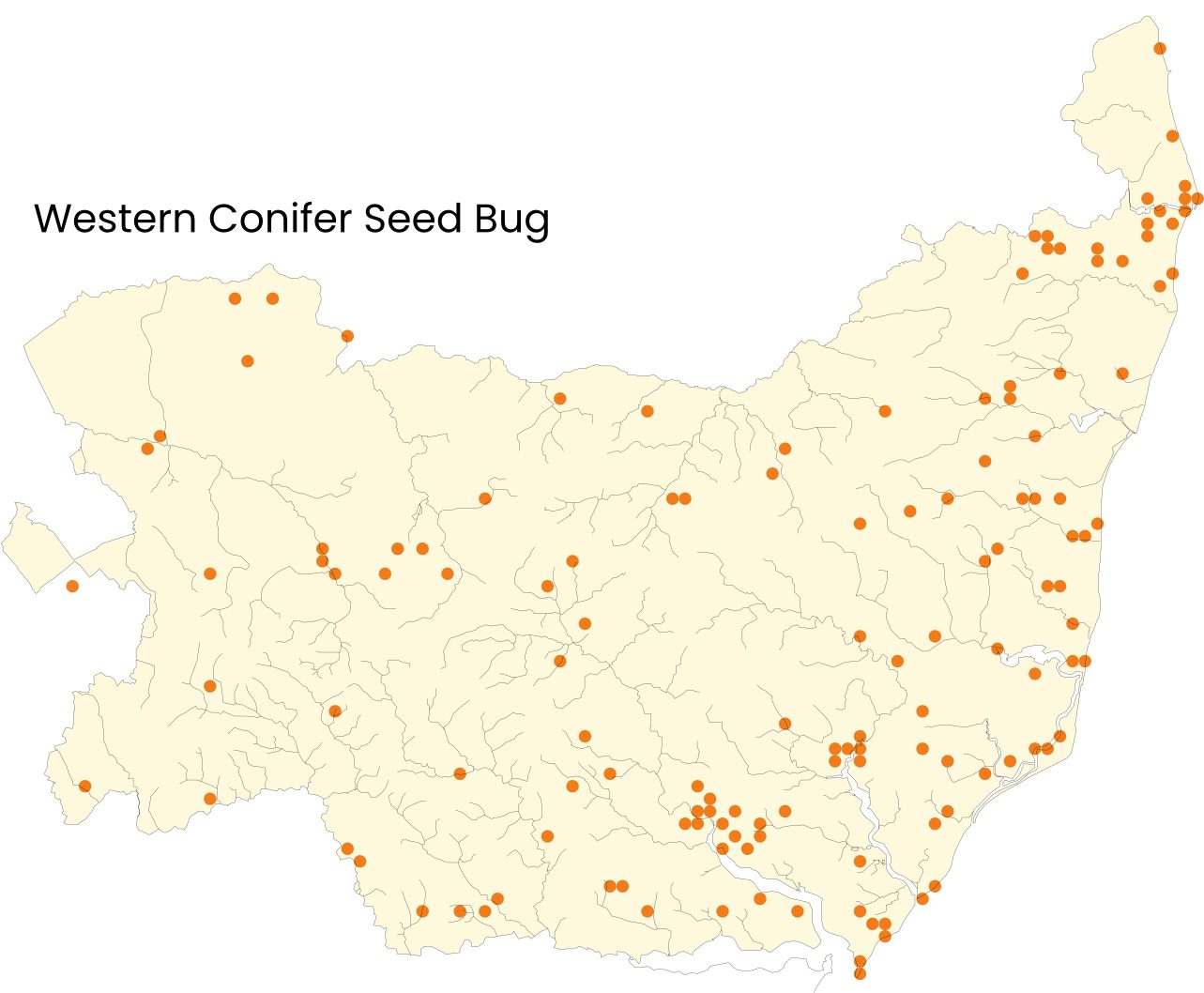
Their range is still expanding, and they have been recorded across the county.
Distribution in Suffolk
They feed on conifers and are now well-established. They are attracted to light and will enter buildings searching for hibernation sites in the autumn.
Lifecycle
© Paul Kitchener (Flickr)
They produce one generation yearly and have a simple (incomplete or hemimetabolous) metamorphosis with no pupal stage before adulthood.
Adults emerge from overwintering hibernation in mid-to-late spring.
Females lay up to 80 light brown barrel-shaped eggs that they glue to pine needles in chains during May and early June. The eggs gradually darken to a reddish brown, and the nymphs hatch after 10 to 14 days.
Young nymphs are orange but become darker, larger and more developed with each of their five moults. In late August, they finally reach their adult stage.
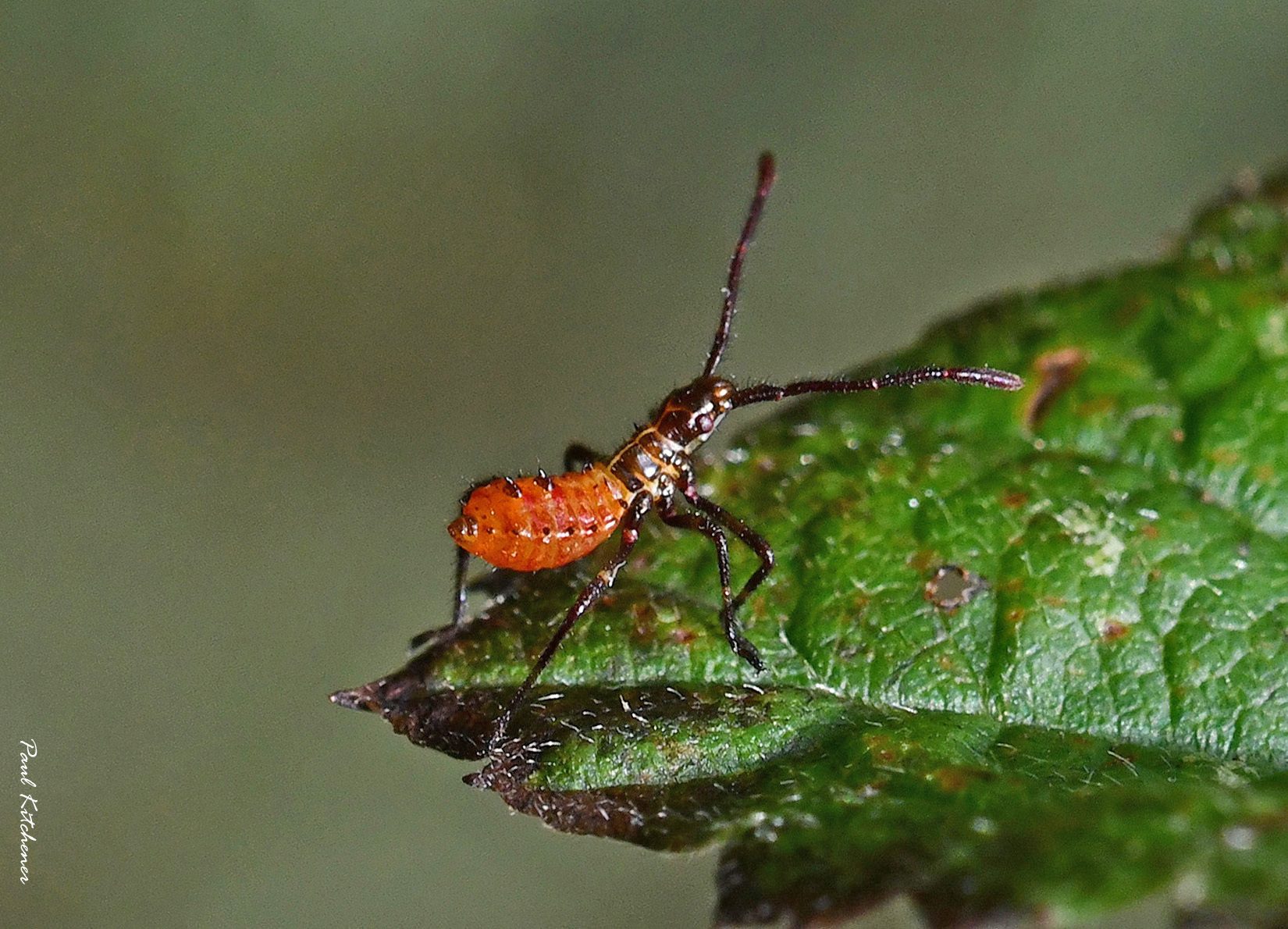
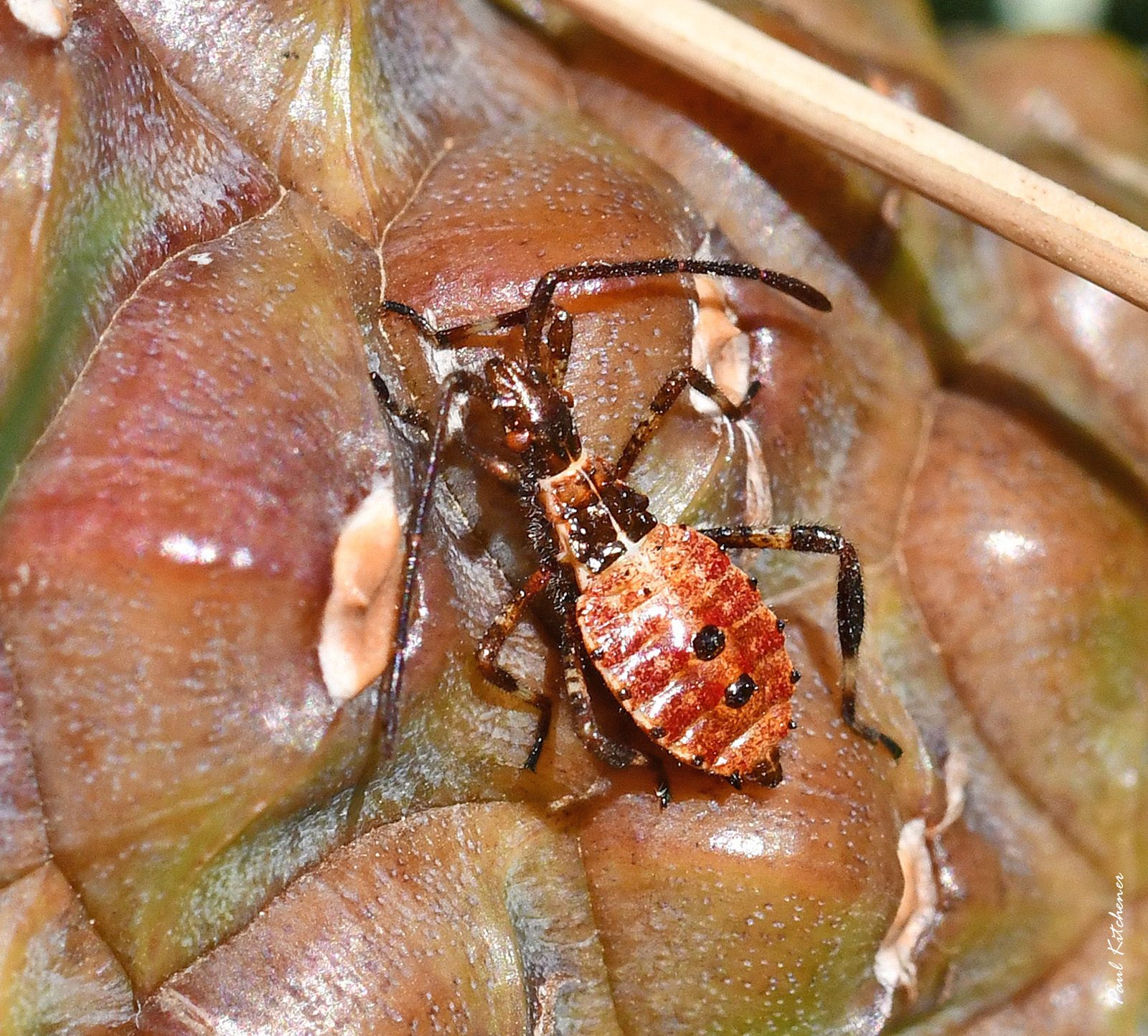
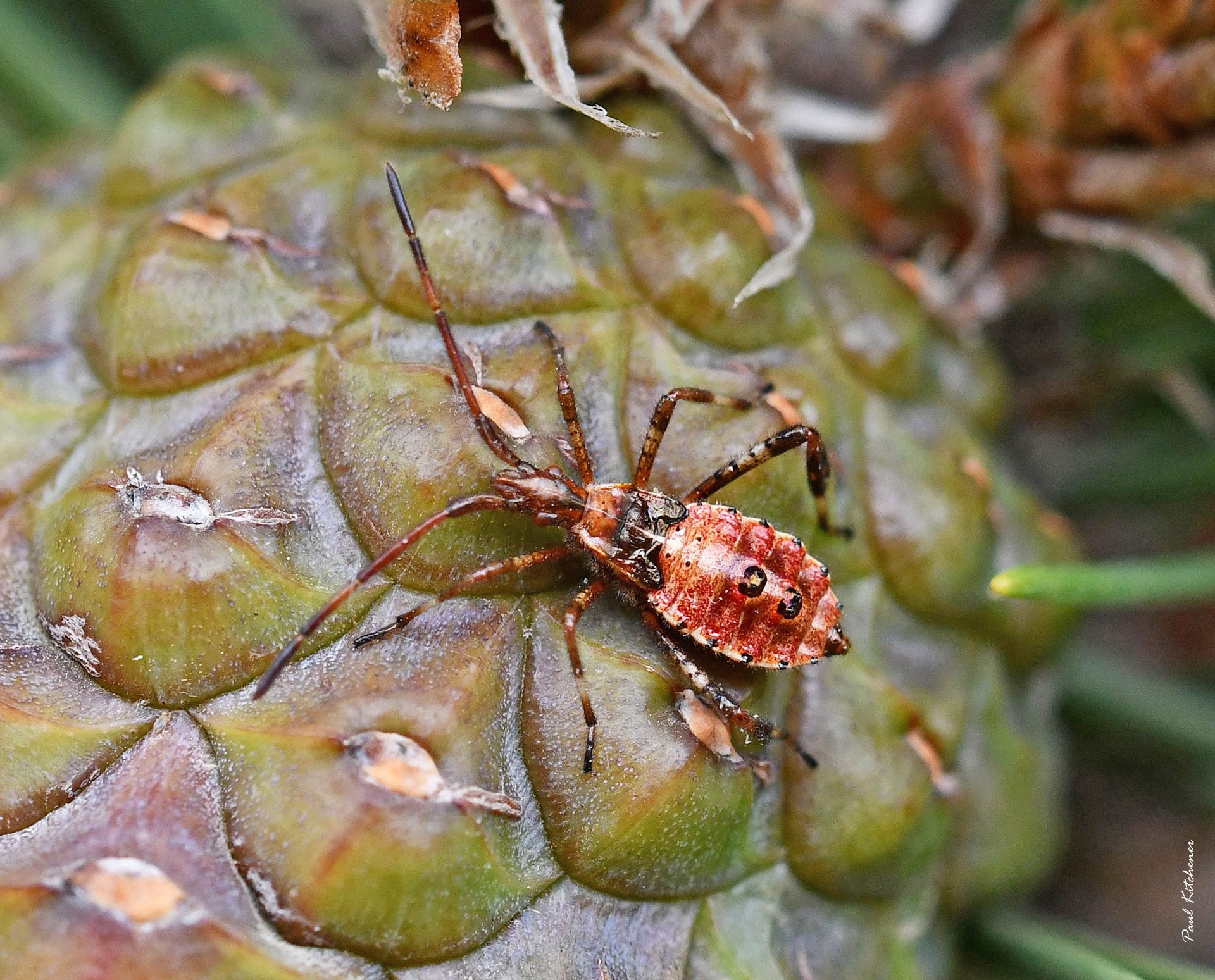
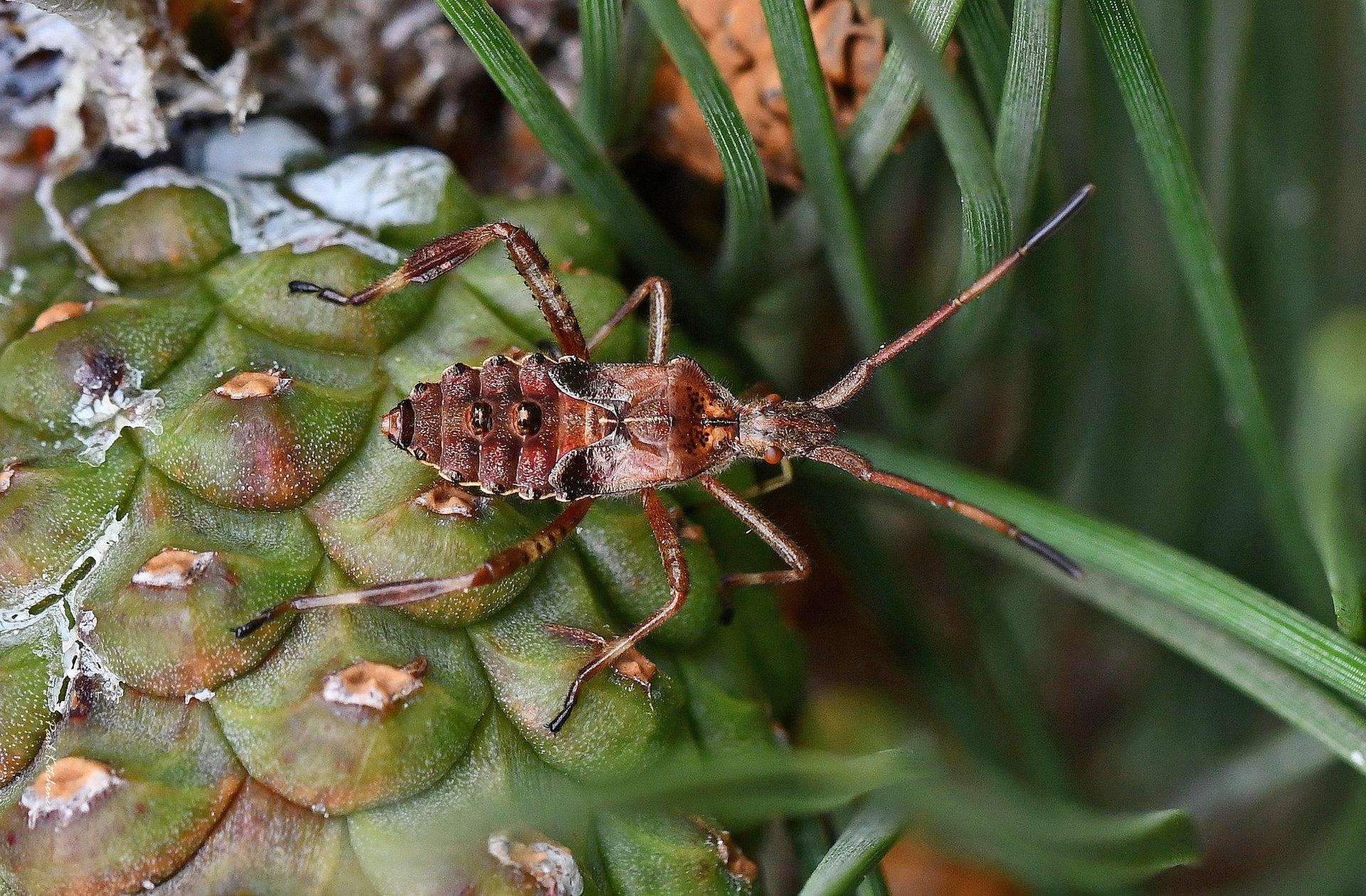
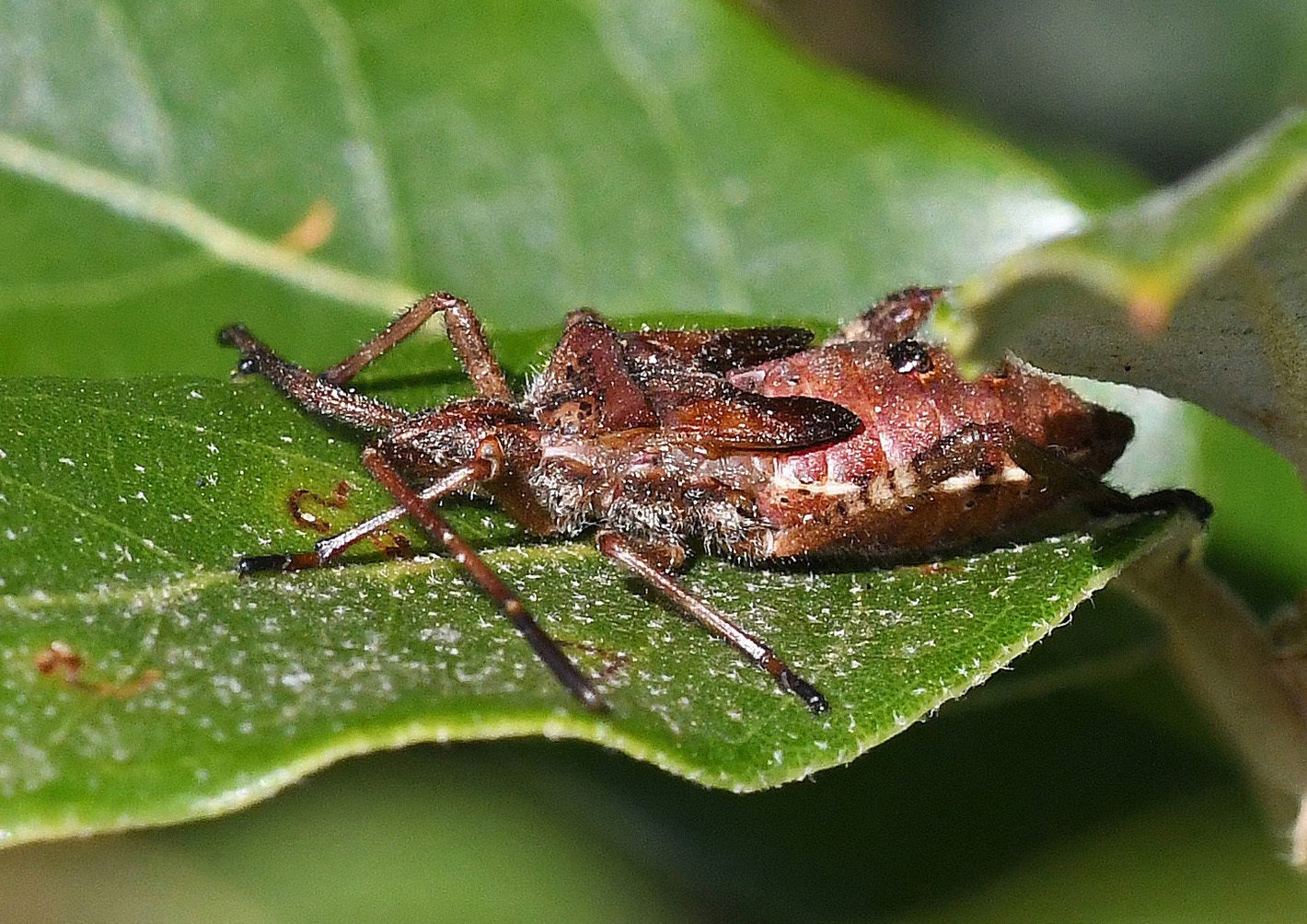
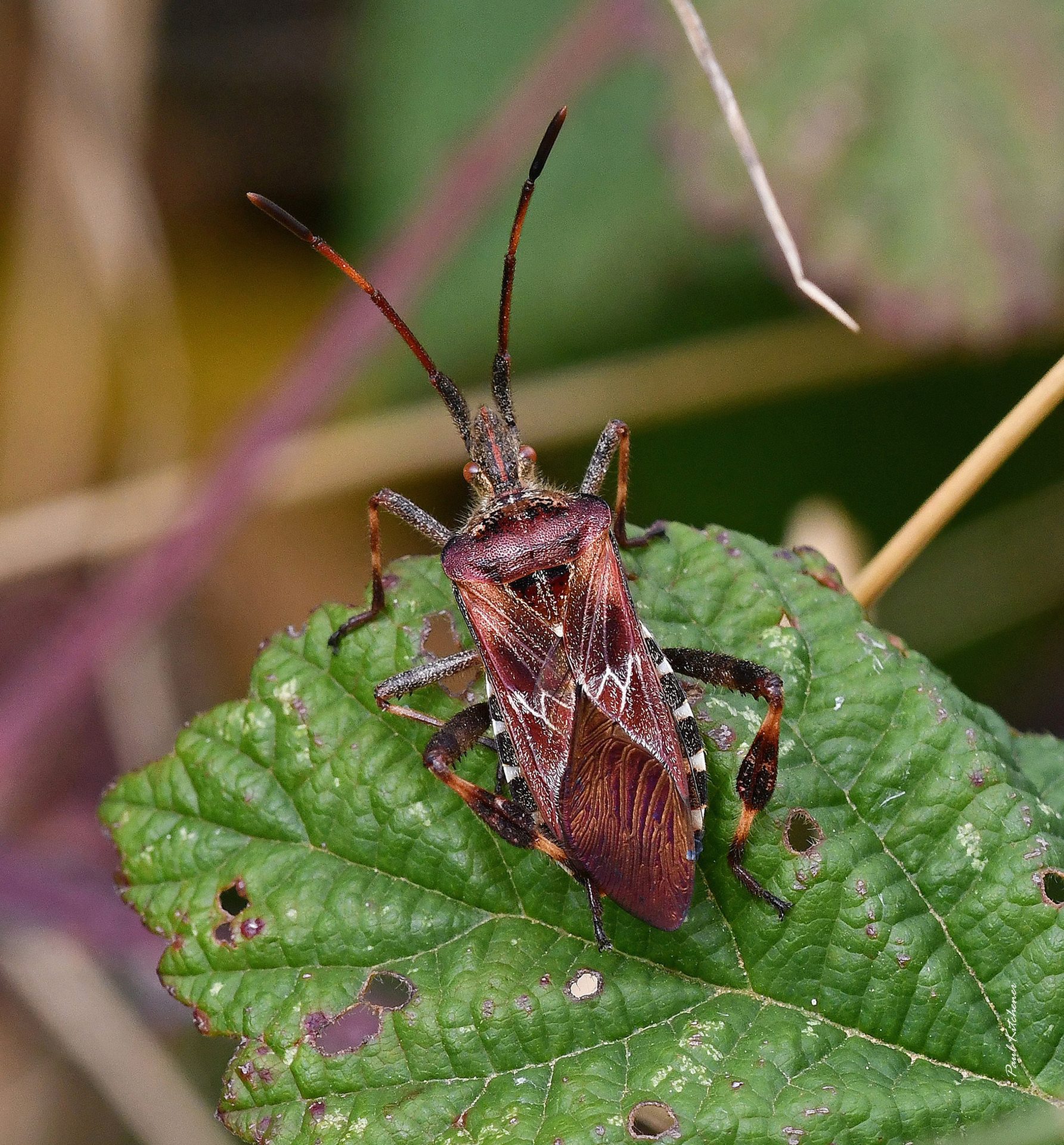
© Paul Kitchener (Flickr)
First instar nymphs feed on the needles and tender tissue of cone scales, while the later-stage instars and adults feed on developing seeds, early flowers and cones. They stick their needle-like proboscis into the conifer seed, inject a digestive liquid to break down the seed’s energy stores and then drink it.
© Paul Kitchener (Flickr)
Did you know?
The adults are strong fliers and produce an audible ‘buzz’ when in flight.
Box Bug
Gonocerus acuteangulatus
Smaller: about half the size at 11–14 mm.
A reddish-brown squashbug. Nymphs have a green abdomen which can become dull red late in the season.
Occurs widely in the south-east of England and beyond.
Denticulate Leatherbug
Coriomeris denticulatus
Smaller: about half the size at 7–9 mm.
A reddish-brown squashbug which is distinctly bristly, particularly on the pronotum, legs and antennae. The lateral margins of the pronotum are covered in white spines, each ending in a dark tip.
Bugs that look similar
The Box Bug and Denticulate Leatherbug both look superficially similar. However, they are much smaller, about half the size of a Western Conifer Seed Bug, and neither have enlarged tibiae or the white zig-zag.
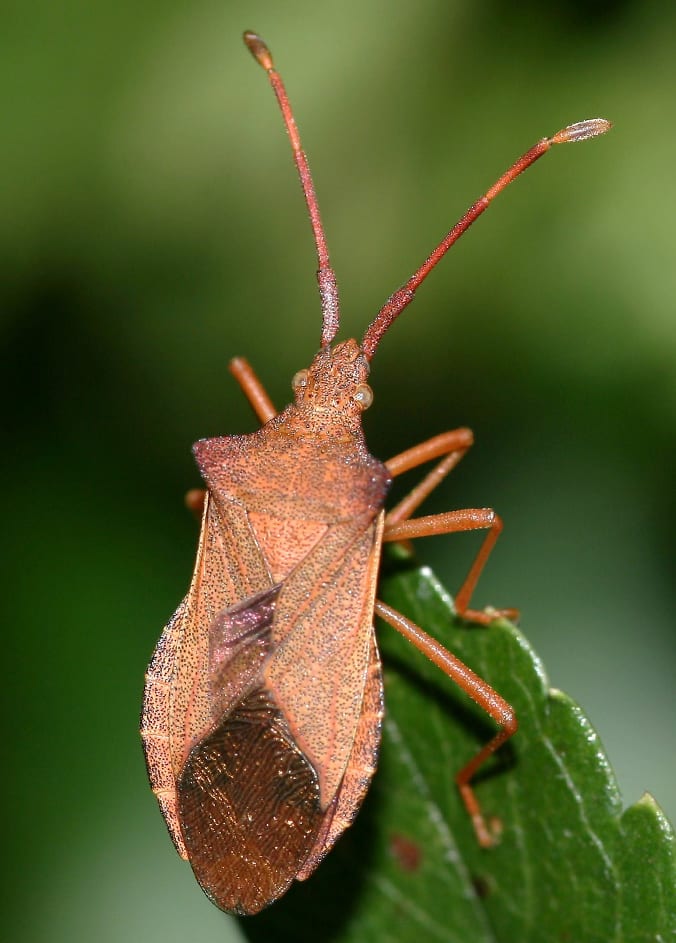
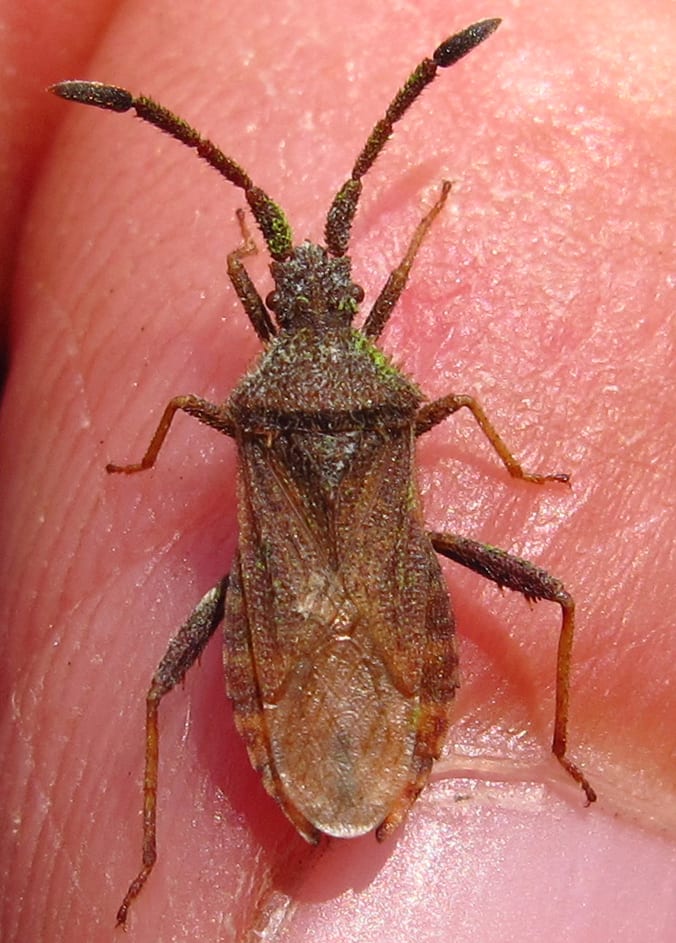
© Dean Morley (Flickr)
© Nigel Jones (Flickr)
Spotting them
When to see them: Year-round. Nymphs and adults can be seen on conifers in spring and summer; adults can sometimes be seen around homes during autumn/winter.
Remember to record your sighting if you spot them in Suffolk!
© Adobe
